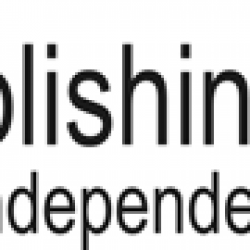
THE SECRET BEHIND ALL BESTSELLERS: MARKETING, MARKETING, MARKETING
With ebook sales on downward trends, print books coming back, and audiobooks rising, the next six months of 2019 still look promising for those authors who understand that self-publishing takes time and invest in book marketing. Sara Stratton, CEO of Redwood Digital Publishing and of the top self-publishing experts in SoCal answers all the questions you’ve been dying to ask about how to market a book and become a successful self-published author.
In this article, you learn:
- What are the right questions you need to ask yourself before you self-publish your book
- What are the top three mistakes that prevent self-published authors from selling books
- What are the most common misconception about self-publishing and how they affect you
- When you need professional help with your book
- What are the key factors to your success as an author
How would an aspiring or first-time author approach self-publishing?
The best thing I could recommend to a first-time author is to first do your research. Find blogs of other self-published authors and read what they have done. Start to familiarize yourself with the processes and steps needed to be taken in order to make your book real. You don’t have to become an expert in the world of publishing, but figuring out what you want to do IN the publishing world can help you immensely. And that can be as simple as establishing answers to the following questions:
- Do you want to print a paperback book? Hardcover? eBook? Audio?
- What is your overall budget for publishing?
- Do you need help getting a cover designed?
- Do you want to sell your book on a website or on Amazon? Both?
Then, I recommend finding a group (either in person or online) of people who have already self-published and ask for some guidance and referrals. These are authors who have gone through the self-publishing process and they have experienced the ups and downs, the pros and cons, and they have likely lived through some mistakes and some excellent choices. Authors love to support fellow authors, so this is a fabulous way to get free, unsolicited advice, so that you can make the best and most informed decisions for yourbook moving forward!
And the last thing I recommend is find an expert. You don’t have to pay somebody several thousand dollars to be your expert. There are many sites or services out there that cost a few hundred and allow you the expertise and advice of publishing experts – people who do this for a living. If somebody wants to charge you $6,000 / 8,000 to publish your book, run. If somebody wants to help you publish your book but they don’t want to even read your book first, run. Once you’ve found an expert who agrees to read your book, or at least a portion of your book, and who can take your hand and treat the publishing process like a collaboration, you know you’ve found a winner.
What are the trends you see in self-publishing for the second half of 2019?
I think that this has been trending for quite some time now but I have seen it explode over the last few months. That is … audio books. Audio books are growing exponentially. They are becoming easier and quicker to do and they are a fabulous tool for authors in terms of marketing. Everybody seems to have a commute nowadays, and those who travel want something that they can listen to while they wait in line at the airport to board, or in an uber on the way to their hotel … and so, audio books are really finding their time to shine is now.
On the downward trend … ebooks!! Yes, that’s right! I said it. It was just a handful of years ago that I (among many other publishing folks) were afraid that print books would be ousted by the digital era. And back then, it kind of looked like it would happen. Kindles, Nooks, Amazon Fire, iPads, iPhones, i…everything – they were everywhere. But, turns out, it was a hype that only lasted a few years. Print books are coming back and they are stronger than ever. We have been seeing a decline in eBook sales since late 2018 and I predict they will be down even further come end of 2019. I think that more and more people find that having a print book adds a level of “legitness” or credibility to themselves. They can display the book on their coffee table at home; they can highlight sections that they want to remember. Books are really coming back and I couldn’t be happier.
And last, diversity in the content that is being written and published. More and more books are coming out that are inclusive of all different races, minority groups, languages, social and economic groups, sexualities, etc.
You’ve been working with many authors. What are the three top misconceptions about self-publishing?
1. That self-publishing is “vanity publishing.”
Many authors start out by thinking that self-publishing is vanity publishing. That it doesn’t show they are a credible author so they just did it themselves. This is just nottrue. In today’s world, people are looking to books to find answers. They are looking for leaders and solutions to problems. Readers just don’t care anymore whether the book is published by a big name publisher. Because, in reality, if you look at the books being published by mainstream publishers, you can see pretty quickly that books are published for money, not just for content.
Books are published for celebrities – people who have huge social media followings.
That = money. That is all publishers see. Dollar signs. And even IF you were to get a deal with a publishing house, you are likely going to wait months, sometimes even years, before they pull the book off. (Example: I am working with an author who had written a book about his life with a certain high-profile rockstar; it was to be published by a big publishing house but they dragged their feet for 3 years without making any progress, and then when they were finally ready, they tore his manuscript apart, rewrote it, and then wanted him to pay for all the print and marketing…he cancelled his contract and began the pursuit of self-publishing.)
2. That self-publishing looks cheap.
No, no, no. Just no. Self-publishing has come such a long way to meet the demands of authors who are deciding they want to control their own publishing destiny. The print quality of POD books is really very nice, and you can always print your own stockpile of books at a local print shop, paying a little extra for nice quality and using that for marketing purposes.
3. Self-publishing is easier than traditional publishing.
I hear this a lot from authors and clients. There seems to be an assumption that because the process doesn’t go through an agent and then have an 8-12 month waiting process like the manuscript would in a traditional house, that self-publishing is an easy process and should be able to be completed fairly quickly.
This one just isn’t true. Everything takes time – designing a cover, designing the interior of your book, getting things checked and checked again, uploading files and then reviewing proof copies. It all takes time. It doesn’t matter whether it’s done in a huge firm or by a stay-at-home mom who specializes in book editing and publishing. Don’t rush the experts that you have decided to hire otherwise you will pay for it in the long run. Your book may be released with mistakes, bad design, etc.
What are the top three mistakes self-published authors make?
1. Rushing.
While I understand that anxious feeling to get the book out into the world and have it start selling, especially now that your piece (the writing) is done…don’t rush. Releasing a book needs to be done with care and at the right time – did you know there are certain months that are better than others to release certain types of books? While you don’t want to let the book sit for years, don’t try to force whomever is helping you to finish it in a couple of weeks. Something…always…goes…wrong.
2. Picking an obtuse title / subtitle.
Many authors I work with will pick titles that they think are catchy or flowery, or even funny. Titles and subtitles are the eyes into a book. If a reader doesn’t understand what the book is about when they read those two lines, they are not going to pick the book up. Because, well, they just won’t get it and they won’t think it’s for them. I once heard the title and subtitle described as the heart and the head of the book, and I couldn’t agree more. A little more on that below…
Title – your title is your “heart” of the book. It should bring up some kind of emotion for your reader.
Subtitle – your subtitle is your “head” of the book. It should explain to your reader exactly what they are going to get out of the book. It should appeal to their logical / rational side.
3. Ignoring marketing / sales.
I know…it’s hard. You are an author! Not a sales person. I get it. But deciding that you won’t put any effort into marketing or selling your book is just bad! The world of books is completely saturated right now. There are hundreds of books online…hundreds of thousands. Thinking that your book might be different because it’s so well-written, or the storyline is unique, is just … not smart thinking. Your book could be the best thing to hit the market in decades but if you don’t market it and sell it, it will never be known as the next best read.
A common question I get is how much does it cost to self-publish a book. What is your opinion?
The cost of self-publishing is a tough question. I think there are many people out there who disagree with paying for publishing assistance, but I think that it can be worth it, especially if you have the budget for it. And if you are an author who is writing in your spare time, and you work an 8-5 on the weekdays, you may find it worthwhile to pay somebody to be making the “wheels turn” while you are working. I’ve seen costs that range from a few hundred to even a few thousand.
However, be wary of the folks who continue to upsell you. Even if you sign on to a contract for a few thousand, consider making sure it includes many of your bells and whistles – editing (copy editing and proofreading); cover and interior design; registration purchases & sign up (copyright, ISBN, barcode, library of congress); 2-3 rounds of bulk edits to the design; eBook conversion; and distribution to the right places (Amazon, etc).
While I don’t think all authors need to pay the same high prices, I do believe that if you have a budget for publishing, you should use it.
If an author is on a shoestring budget, what should they use their money for?
Two things – editing and cover design.
Editing your book to as close to total perfection as possible, because if you plan to release more books (or your first book is part of a series), that is your first impression. If readers decide they can’t follow your writing, or the book is littered with typos, you may lose that reader, risk getting bad reviews, and that reader may tell their friends that they shouldn’t buy your book(s).
Cover design – your cover design is the very first thing that everybody will see. Whether in a small thumbnail on your website or on Amazon, or when they receive a copy of the book. If the cover doesn’t catch them in the first 5-10 seconds, you may have lost their interest in the book altogether.
Sometimes, it can be too hard to navigate the publishing journey by yourself. What is a concierge publisher and how do you help authors?
It is SO hard. I come from the world of ghostwriting – I worked mainly with traditional publishers until I realized that many projects…really goodprojects…were being passed over because the author didn’t have enough of a “platform” in the publisher’s eyes.

That’s when I delved into the world of self-publishing. I wanted to understand everything about it and see if it was something that I could become an expert on and help authors get their stories told. I found it to be even more fascinating than the ghostwriting world and I quickly left the traditional publishing world behind.
What I did find though was that there were many self-publishing companies out there that were taking advantage of authors. They were not following the right rules of publishing; they were asking authors to pay thousands of dollars for simple tasks; they were hiring out of country customer service (so simple errors were not being caught or understood once explained); and they did not know books so things were being overlooked. And so, I started my company where I promise that I and anybody on my team come from the book world. As I say, we all speak “book” at Redwood Publishing.
My aim as a concierge publisher is to be your right-hand woman. I will be there to guide you through every decision, walk you through the pros and cons of them, and hold your hand every step of the way. I treat every book as if it were my own book and the recommendations I make are for steps I would take myself for my own book. I wouldn’t ever suggest doing something that I haven’t already done before either for myself or for other authors, or that I wouldn’t do in the future.
What were the key factors that contributed to your authors’ success?
Marketing, marketing, marketing. Early on you should write out some kind of a marketing strategy or plan. It doesn’t have to be detailed. Figure out these things – who is your target reader (be specific … saying “this is for readers age 18 – 45” doesn’t help); where do they hang out; what other books do they read; what do the covers of those other books look like.
That way, you have a vision. You can have clearer idea on the type of book cover design you want, and how you can appeal to your readers.
What is the best advice you can give to authors who aspire to write a bestseller?
Practice, practice, practice. Write whenever you can. Read other books – award winning books, non-award winning books, blogs, anything within your genre. And be patient. Write and ask for critique. Take it in stride. Make changes where you see fit.
About Sara Stratton
A University of California, Irvine, alumna, Sara studied Broadcast Journalism, Print Journalism, and Women’s Studies.
She is a recognized expert in the publishing industry, and most recently created, developed, and implemented the publishing division of one of the most prominent ghostwriting firms in the United States. Her work includes memoirs, business inspirational and motivational books, working with women “disrupting” the industry through social changes and business books (e.g., Finance, CEO lessons learned, etc.).
Among other works, she has served as editor of an International Best Selling business and motivational book, writer on a Kindle #1 Best Selling business book, and editor on a book that was recently picked up by Deep River Books.






 Quick & actionable
Quick & actionable